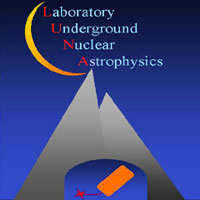Nuclear reactions that generate energy and synthesize elements take place inside the stars in a relatively narrow energy window: the Gamow peak. In this region, which is in most cases below 100 keV, far below the Coulomb energy, the reaction cross-section drops almost exponentially with decreasing energy. The extremely low value, from pico to femto-barn and even below, has always prevented its measurement in a laboratory at the Earth’s surface, where the signal to background ratio would be too small because of cosmic ray interactions. Instead, the observed energy dependence of the cross section at high energies is extrapolated to the low energy region, leading to substantial uncertainties. In particular, a possible resonance in the unmeasured region is not accounted for by the extrapolation, but it could completely dominate the reaction rate at the Gamow peak.
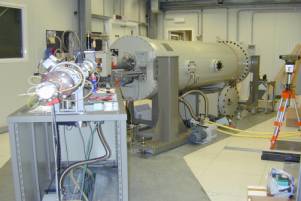
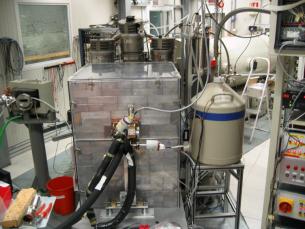
In addition, another effect can be studied at low energies: the electron screening. The electron cloud surrounding the interacting nuclei acts as a screening potential, thus reducing the height of the Coulomb barrier and leading to a higher cross-section. The screening effect has to be measured and taken into account in order to derive the bare nuclei cross-section, which is the input data to the models of stellar nucleo-synthesis.
In order to explore this new domain of nuclear astrophysics we have installed two electrostatic accelerators underground in LNGS: a 50 kV accelerator that took data until 2001 and a 400 kV one that was installed in 2000. Outstanding features of both the accelerators are a very small beam energy spread and a very high beam current even at low energy. Windowless gas targets or high purity solid targets have been mounted in our set-up, whereas silicon detectors, a 4π BGO summing crystal and ultra-high purity germanium detectors are being used for particle and gamma ray detection.
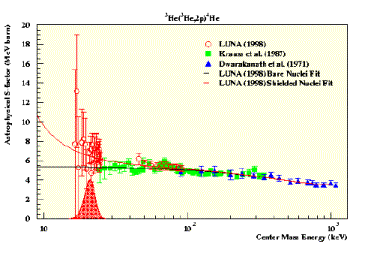
Fig.1: Astrophysical factor S(E) for the 3He(3He,2p)4He reaction.
With the 50 kV accelerator the 3He(3He,2p)4He and d(p,γ)3He reactions have been measured for the first time within the Gamow peak of the Sun. (Fig.1 and Fig.2 show the astrophysical factor S(E) of the two reactions). The former plays a big role in the proton-proton chain, largely affecting the calculated solar neutrino luminosity, whereas the latter is the reaction that rules the proto-star life during the pre-main sequence phase.
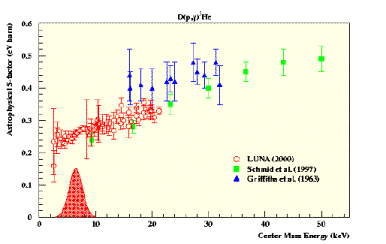
Fig.2: Astrophysical factor S(E) for the d(p,γ)3He reaction.
One of the first and main results obtained with the 400 kV accelerator has been the low energy measurement of the 14N(p,γ)15O, the slowest reaction of the CNO cycle, the key one for the knowledge of the CNO solar neutrino flux, as well as for the determination of the age of the Globular Clusters, the oldest population of stars in the Galaxy. The results obtained at low energies both using a high resolution solid target setup and a high efficiency gas target setup, have given a cross-section reduction of about a factor 2 compared to the values used in the stellar models. As a consequence, the predicted CNO solar neutrino flux has been decreased by about a factor 2 and the age of the Globular Clusters has been increased by about 1 billion years. Furthermore the data obtained down to 70 keV interaction energy, with the BGO summing crystal, have provided the first direct reaction rate measurement in the Gamow peak of the AGB (Asymptotic Giant Branch) stars. In Fig. 3 a summary of the S-factor measurements for the 14N(p,γ)15O reaction is reported.
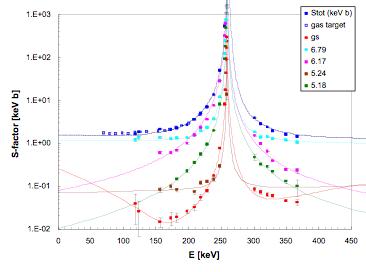

Fig. 3: Astrophysical factor S(E) of the 14N(p,γ)15O reaction for the different g-transitions measured with the high-resolution detection setup together with total S(E) measured with the high-efficiency detection setup (gas target+BGO crystal).
With these measurements LUNA has shown that, by going underground and by using the typical techniques of low background physics, it is possible to measure nuclear cross sections down to the energy of the nucleo-synthesis inside stars.
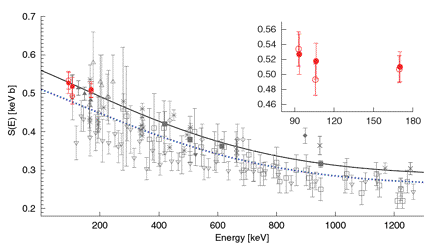
Fig. 4: Astrophysical factor S(E) of the 3He(4He,g)7Be reaction. The red circles are the new LUNA data. Open red circles are activation data, while full red circles are prompt g data.
The 3He(4He,a)7Be, a key nuclear reaction for Solar neutrino production has been measured at LUNA down to 93 keV with an uncertainty of 4%. The 3He(4He,a)7Be reaction cross section has been namely the largest nuclear physics source of uncertainty in predicting the solar 7Be and 8B neutrino flux. The reaction cross section has been obtained detecting the prompt g-rays and the delayed g-rays from the 7Be decay at the same time, proving that no discrepancy exists between the results obtained with the two techniques (see Fig. 4), therefore reducing the uncertainty on the3He(4He,a)7Be cross section. As a consequence the uncertainty on the prediction of the 7Be and 8B Solar neutrino flux due to nuclear physics inputs has been significantly reduced.
The measurement of the 25Mg(p,g)26Al has been recently completed at the 400 kV accelerator and a new determination of the reaction rate at low energy has been obtained. This reaction is the main source for 26Al production in the Universe. In order to discover possible systematic errors, the 25Mg(p,g)26Al reaction has been studied using different techniques: detecting the prompt g either with a HpGe detector or a BGO summing crystal and using the AMS (Accelerator Mass Spectrometry) approach. In Fig. 5, the BGO g-ray spectrum obtained at Ebeam=100 keV (the lowest measured energy) is presented.
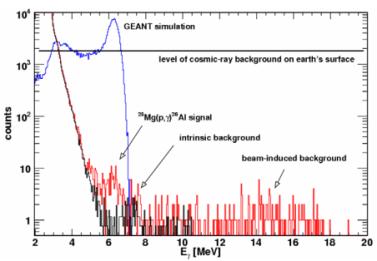
Fig. 5: LUNA-BGO gamma-ray spectrum of the 25Mg(p,g)26Al collected at the E=93 keV resonance and associated background. A high statistics GEANT4 simulation is shown to demonstrate the correct position of the25Mg(p,g)26Al g-ray peak.
15N(p,g)16O is an important reaction of the CNO cycle for H-burning in massive stars. The ongoing experiment is the measurement of its cross section. In a first phase, already completed, the cross section has been measured in collaboration with the University of Notre Dame (USA), using a solid target with a HpGe detector in the energy window 120 keV-1.7 MeV. Data have been taken first at Notre Dame at 350 keV-1.7 MeV and subsequently, with the same setup at LUNA in the energy region 120-400 keV. In this way a large energy region has been explored with the same systematic uncertainty and the data can be used for reliable R-matrix extrapolations of the S-factor to solar energies. To take full advantage of LNGS and push the low energy limit as close as possible to the astrophysical energy region, the same reaction is presently measured with a solid target placed inside the BGO summing crystal
